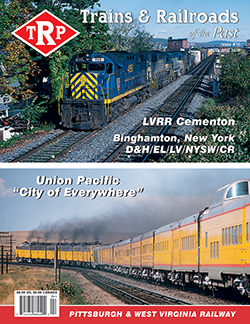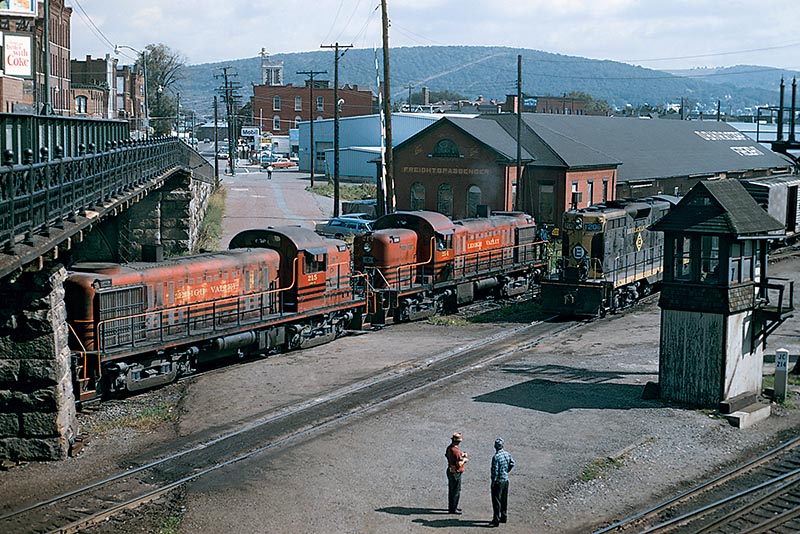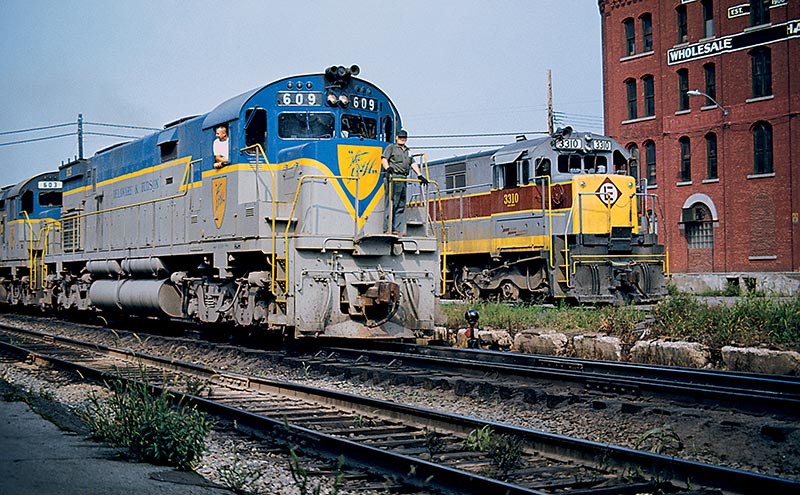 By Jay A. Winn/photos as noted
By Jay A. Winn/photos as noted
How it all started… My grandfather was a mechanical engineering professor and lover of all things mechanical, and near the top of his list were railroads. When I was about eight years old he started taking me with him when he went train watching. We spent a whole lot of time watching the New York Central near our home in Utica, N.Y., but occasionally we ventured further afield on day trips to see the Delaware & Hudson at Oneonta and Cobleskill. One day in 1956, when I was a bit older, he announced that we were going to take a trip to Binghamton because that was a very busy place with no less than four different railroads. On that trip I got my first look at the Erie, the Delaware, Lackawanna & Western, and the Lehigh Valley. I also got to see more of my favorite railroad, the Delaware & Hudson.
It was an overnight trip and we stayed in the Arlington Hotel just across the street from the Lackawanna station. We watched trains all day and then into the night and then part of the next day. It was a memorable couple of days spent watching all of the incredible action in and around the station area at Chenango Street. The location was a railfan’s dream. It was an incredibly busy place with passenger stations for three different railroads and freight yards for two of them all located in close proximity to one another. There were so many trains that there was rarely a lull in the action. It seemed that there was always a train moving somewhere within that location. There were freight and passenger trains from both the Erie and the DL&W, a number of freights and a passenger train from the D&H and even the Lehigh Valley made an appearance. Even when there was no mainline action there was always some switching going on in the yards. I had become accustomed to the fact that a railfan had to have patience, since it was quite normal to wait a while for a train to show up, and then to wait even longer for another; four or five trains represented a good day. Binghamton was unlike anything I had ever experienced. I was so overwhelmed I didn’t know where to look first.

The Sayre Turn arriving with two Lehigh Valley RS3’s is seen entering the Liberty St. yard. Next to them is an Erie Lackawanna GP7 1206 working the former Erie QD yard. The tower housed the crossing gate watchman, as the Chenango Street viaduct was not built until 1900 and motorists had to contend with a number of busy crossings at grade. Notice the concrete milepost measuring 214 miles from Erie’s terminal at Jersey City. Photo by Jay Winn
After that first trip to Binghamton watching the likes of the Phoebe Snow, the Erie Limited, D&H Train 205 (all-coach local to Albany) and countless other trains, not to mention the seemingly endless parade of different locomotive types and color schemes, I didn’t want to ever leave. I had previously become a big fan of the D&H at Oneonta after the many trips there with grandfather, but Binghamton had now taken its place as my number one favorite train watching spot. It was even better than my grandfather had described.
Over the next few years I accompanied my grandfather to Binghamton quite a number of times on day trips, but by about 1959 my grandfather seemed to lose interest in Binghamton and preferred Oneonta, so there were no more Binghamton trips until I managed to get a car (and a 35mm camera) in 1964. When I started to explore on my own I realized, much to my amazement, that the station area where my grandfather and I had always spent our time was just the proverbial tip of the iceberg. I was soon to discover that there was so much more to see. Although the text will cover the era from 1956 through 1976, we’ll include photos from the following ten years or so, in order to give you some perspective and appreciation of the many changes that Binghamton has seen…



